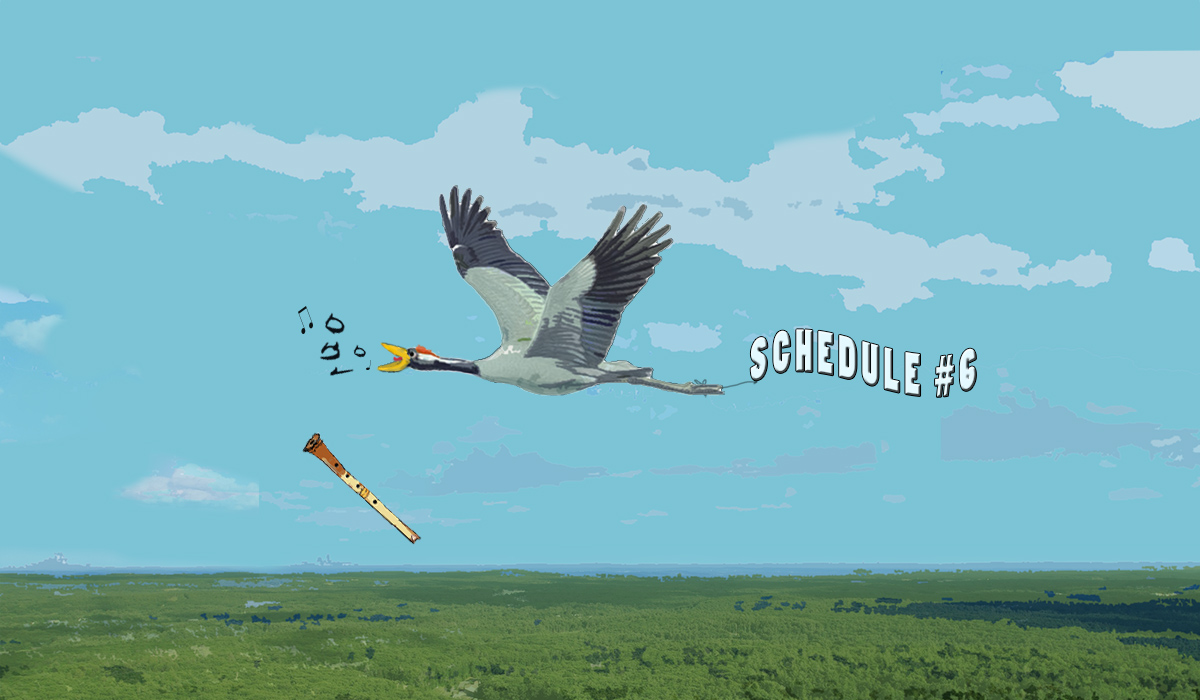SCHEDULE & CONTENT
EVENT #6 APRIL/MAY 2024
THE VOICE WITHIN JAPANESE CULTURE, MUSIC & SHAKUHACHI TRADITION
#6.1 SATURDAY 13 APRIL 2024
Shōmyō Buddhist Chant – Talk/demonstration/workshop
| Session 1 | 10h00 – 13h00 | Junko Ueda 1. Lecture / Talk: History, Philosophy, Notation system, Text 2. Demonstration: Some typical pieces 3. Practice singing shômyô: Melody patterns, Traditional pieces, Breath and body exercises |
Please note that the points 1, 2, 3 of the schedule above are not to be understood chronological but Junko Ueda will mix and jump between these themes during the 3-hour session. Of course there will be a couple of short breaks (5-10 minutes) within the full session time.
#6.2 SUNDAY 14 APRIL 2024
Singing Honkyoku – Exploring honkyoku patterns through voice
| Session 1 | 10h00 – 11h15 | Teruo Furuya – Honkyoku & voice. Ideas of sound and image, transitions |
| Session 2 | 11h30 – 12h30 | Teruo Furuya – sample phrases in honkyoku pieces Tamuke, Azuma-Jishi, Daha, Takiochi |
| session 1 & 2 content will be mixed up during the workshop. |
Teruo Furuya will be sharing his ideas about honkyoku & voice, as singing honkyoku is often seen as an integral part to memorise and understand honkyoku performance and playing on a deeper level.
Furuya says “A good melody in an image has a mode. The presence of a mode (scale, melody) means that each note has its own role to play. Each note has a role of tension and relaxation. If you want a clear melody you need to have a clear image of that melody. The shakuhachi is entrusted with the task of transforming that image into a real sound, but if we use the image and the voice, it is easier to connect the voice with the image first.
In the sessions Furuya will look at specific phrases in honkyoku pieces Tamuke, Azuma-Jishi, Daha, Takiochi to explore with us the importance of the flow, the intensity of notes and the transitions between notes through the way the voice can explore the image of a sound more directly and facilitates our understanding of details and feeling of honkyoku music.
Although this sessions are not focused on shakuhachi per se do have your flutes ready to explore the connection between voice and the playing of sounds.
#6.3 SATURDAY 20 APRIL 2024
Voice in Sankyoku – Talk/demonstration & workshop
| Session 1 | 10h00 – 11h15 | Shino Arisawa – Talk about history of sankyoku / historic music examples / Q&A |
| Session 2 | 11h30 – 12h45 | Miyama McQueen-Tokita – Voice workshop with demonstrations of technique/exercises and practical part to join in. |
The Voice in Sankyoku workshop will consist out of a lecture/talk and some practical demonstration and exercises. In the first session Shino Arisawa will provide an overview of the history of sankyoku, encompassing its social context, cultural significance, and the evolution of repertoire. Furthermore, we will use videos and audio recordings of master musicians’ performances to analyse the relationship between voice and instruments and shed light on the distinctive singing styles across different schools.
The practical component of this session, lead by Miyama McQueen-Tokita, will offer live demonstration performances of well-known sankyoku pieces (e.g. Chidori no Kyoku, Kurokami, Akikaze no Kyoku and Yachiyo-jishi, as well as having the option for participants trying the jiuta vocal technique (Chidori no Kyoku) themselves and singing short passages from these pieces.
#6.4 SATURDAY 27 APRIL 2024
Min’yō – Talk/demonstration & workshop
| Session 1 | 10h00 – 11h15 | Kinzaburo Abe – Talk/demonstrations |
| Session 2 | 11h30 – 12h30 | Kinzaburo Abe – workshop/demonstations |
| session 1 & 2 content will be mixed up during the workshop. |
Min’yō/voice workshop with Kinzaburo Abe will include demonstrations and a practical part for participants to engage in. Participants will have the chance to experience a variety of min’yō songs, highlighting the differences arising from their cultural contexts and regional origins in Japan.
Participants will have the opportunity to explore min’yō singing, including its voice techniques through excerpts from different types of songs. In addition, there will be a demonstration of the tsugaru-shamisen, which plays a significant role in min’yō accompaniment. Lyric samples will be provided in Romanised Japanese and English.
#6.5 SATURDAY 4 MAY 2024 – CANCELLED
Vocalising Shakuhachi – Exploring special shakuhachi techniques
| Session 1 | 10h00 – 11h15 | Anne Norman – Hocketing words with shakuhachi |
| Session 2 | 11h30 – 12h30 | Anne Norman – Vocal techniques on shakuhachi |
Session 1: Hocketing words with shakuhachi
Techniques in alternating sung lyrics and blown notes. Participants will receive excerpts of vox/shakuhachi compositions and exercises in staff notation with kinko tablature above it.
Session 2: Vocal techniques on shakuhachi
Singing while blowing shakuhachi. Working on unison passages; polyphonic harmonising; an exploration of timbral contrasts and microtonal multiphonics. Once again, participants will receive excerpts of vox/shakuhachi compositions and exercises in staff notation with Kinko tablature above it.
Bring your 1.8 shakuhachi, and if you have a 2.1 or 2.4 shakuhachi, bring it too, especially if you have a deep voice. Female shakuhachi players and men with a higher voice will find singing while blowing a 1.8 shakuhachi easiest to meld the two sounds (men are invited to sing falsetto if they wish). Singing an octave lower is also possible and gives quite a different effect.
Anne will create parts for all levels of players to take part in these exercises. It will be up to you to choose the part that suits your skill level and voice range.
I hope to leave you with ideas for how to create your own vox/shakuhachi works that suit your voice and your length of instrument.
